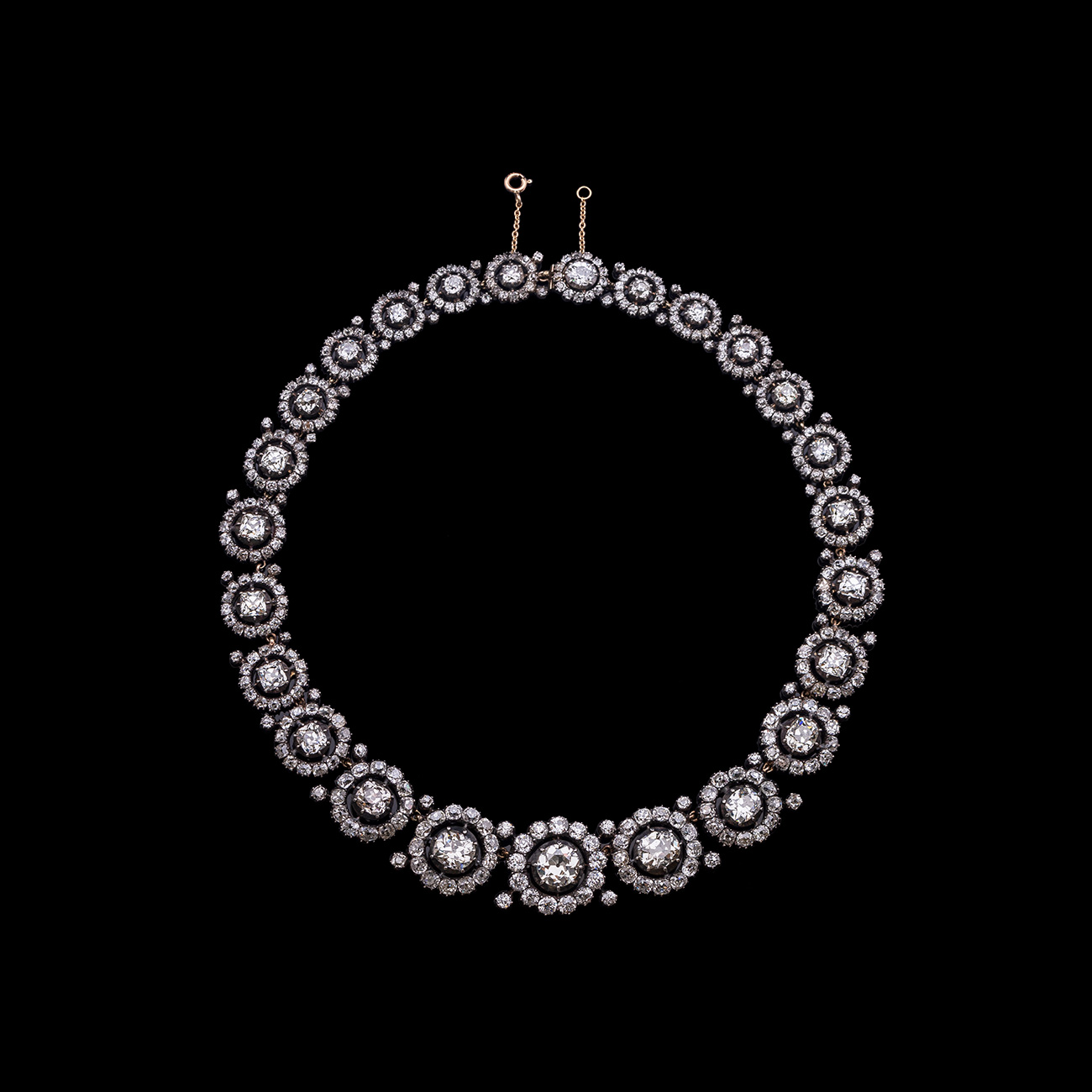


This luxurious Victorian diamond tiara is influenced by the romantic jewelry design of the 19th century. Its style is noble yet elegant, natural yet simplistic, and is made of gold, silver, and diamonds creating a unified symphony of dynamic light. The entire crown is set with 25 large diamonds, each of which is decorated by a circle of smaller diamonds in elegance and class. The diamonds are joined together with delicate gold and silver work.
However, what makes this crown unique is not only its stunning craftsmanship and brilliance but also the practicality of its design. This necklace headpiece can be worn in a variety of ways, either as a crown on top of the head, disassembled into a necklace, headband, or used as a hair accessory. The variety of headbands and hair ornaments has a long history, beginning no later than around 475 BC to 330 BC. The ancient Greeks wore hair bands for special occasions or important events. Cultures such as the Etruscans and Romans began to decorate their wreaths with jewelry made of gold and silver. In many ways, the headband is not a single item, but a complete assortment of accessories with a history as long as its complexity. From faith-based and culture-specific uses to elaborate fashion accessories, hair accessories and their accompanying variants have existed for centuries. Mesopotamia used headbands made of fish scales to hold the hair in place, while Greek laurel wreaths were rooted in mythology; both were images of intellectual or physical prowess. Then there are the medieval headbands and the flower crowns, favored by ancient civilizations and in the present day, Coachella participants.